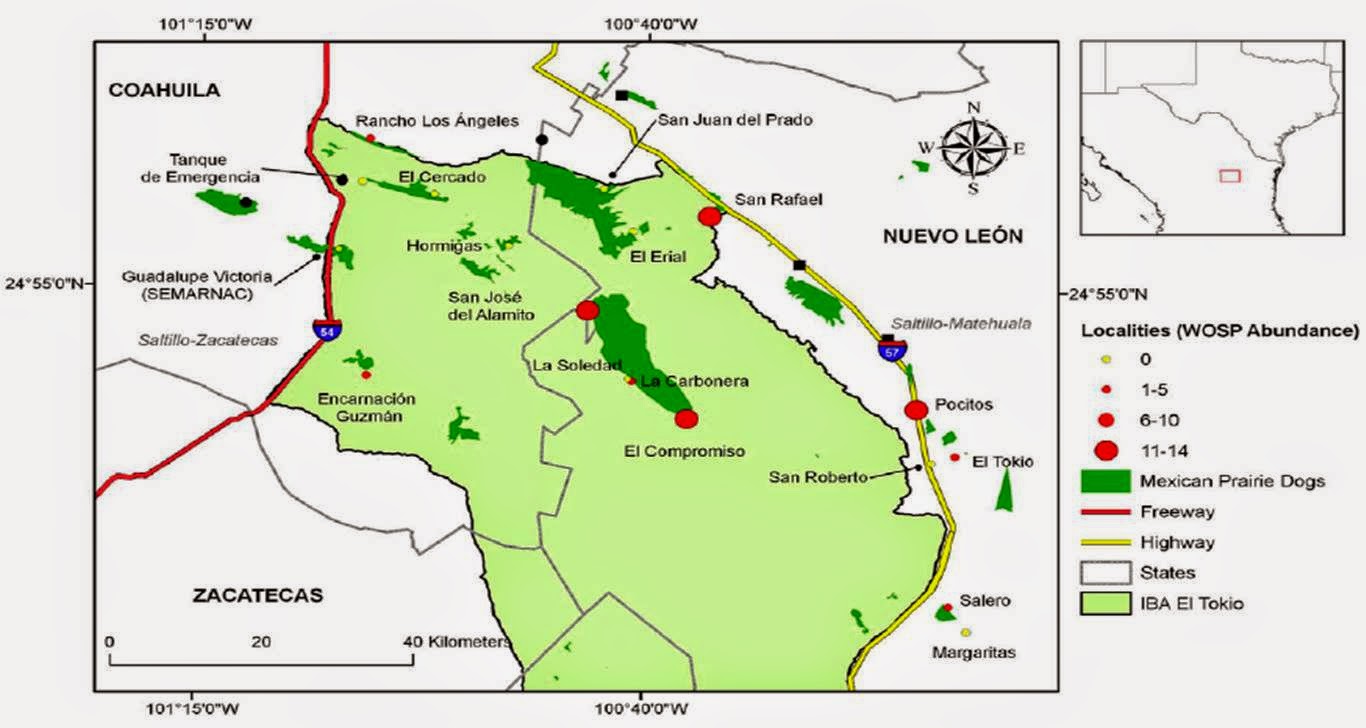Stu has recently been in Mexico working with research groups from three universities along with a team from Pronatura (the BirdLife partner) on research into some of the country’s most threatened birds. These included the northern population of the Sierra Madre Sparrow Xenospiza baileyi, the Baja endemic Belding’s Yellowthroat Geothlypis beldingi and the pine-loving Thick-billed Parrot Rhynchopsitta pachyrhyncha (all Endangered).
But first up was the Worthen’s Sparrow Spizella wortheni, a charming but Endangered bird of the shrub-grasslands of the northern states of Coahuila and Nuevo León. A major threat to the sparrow is the expansion of potato-growing in the region. Here, Irene Ruvalcaba Ortega, Ricardo Canales, and José I. González from Laboratorio de Biología de la Conservación y Desarrollo Sustentables (UANL) and I talk about the conservation biology of the species, and a project that we hope to initiate that will help secure its near future.
 |
| The Endangered Mexican endemic Worthen's Sparrow Spizella wortheni (Photo: Ricardo Canales) |
Worthen’s sparrow, a relative of the semi-migratory Field Sparrow Spizella pusilla, was first described from New Mexico, USA, in the 1880s – this remains the only record of Worthen’s from outside ‘old’ Mexico. The last 100 years or so has seen its range contract so much that it known now from just a few sites in two of Mexico’s northern states. BirdLife’s assessment is that there may be as few as 100 mature individuals - although they point out that there is scope to find new populations in this vast landscape.
Following discussions at the Universidad Autonóma de Nuevo Leon, where much of the recent research on the species has been carried out, we headed out into the field, joined by Hugo Elizondo, a research assistant who has seen more Worthen’s in the wild than anyone. Work by the group has found several new sites for the species and important new breeding areas (Canales-del Castillo et al. 2010). There may be more undiscovered populations – some areas cannot be visited due to security problems associated with Mexico’s cartels.
 |
| The main areas where Worthen's Sparrow are known to occur. New sites are being found, but search efforts are hampered by security issues. |
 |
| Worthen's sparrow in typical nesting habitat (Photo: Ricardo Canales) |
 |
| Worthen's nesting habitat at Museo de las Aves de Mexico's La India reserve (Photo: Stu) |
Our immediate aim is to get a Mexican PhD student, supported by Masters and Undergraduate students working on Worthen’s and its habitat.
References
Canales-Delgadillo, J.C., Scott-Morales, L. & Korb, J. (2012). The influence of habitat fragmentation on genetic diversity of a rare bird species that commonly faces environmental fluctuations. Journal of Avian Biology 43: 168-176.
Canales-del Castillo, R., Gonzalez-Rojas, J.I., Ruvalcaba-Ortega, I. & Garcia-Ramirez, A. (2010). New breeding localities of Worthen's Sparrows in northeastern Mexico. Journal of Field Ornithology 81: 5-12.


No comments:
Post a Comment